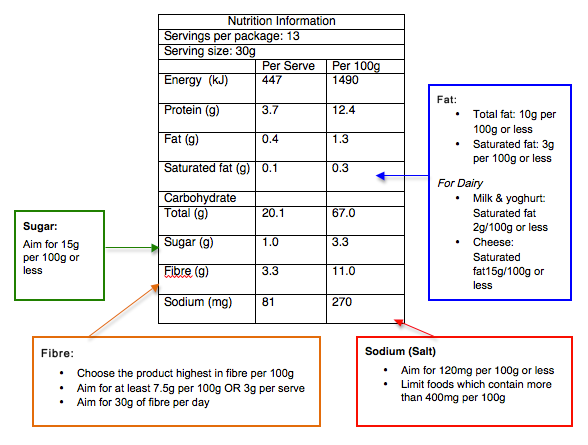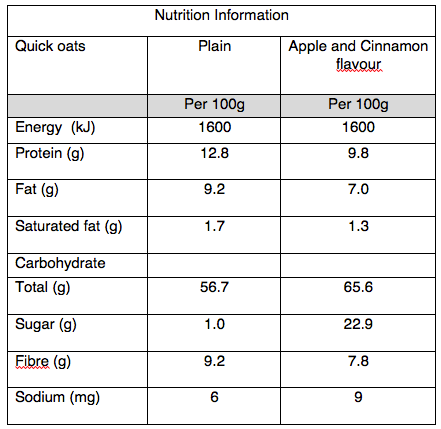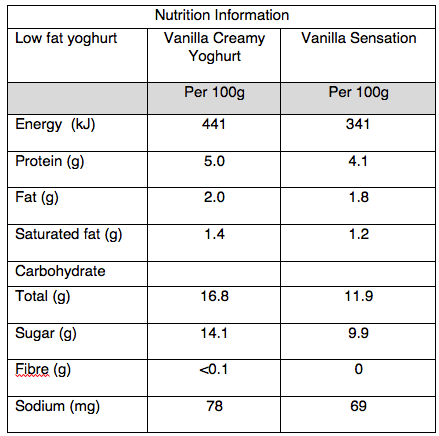Understanding food labels; what’s actually in your food
by Dinethri Ramasundara
My clients always ask me, how do you know what food and drinks to choose when buying groceries? It can be confusing with all those choices that we can buy in the markets today. So let’s get started on how to choose healthier food and drinks!
In Australia, we have 2 main forms of food, fresh food and packaged food that we use on a regular basis to have a balanced diet. Usually fresh food is less processed and provides valuable nutrients therefore should make it your primary food source in your diet.
Nowadays we also have access to a huge range of packaged food at the markets. Most packaged food in Australia contains a Nutrition Information Panel (NIP) and an ingredient list, which could be used when deciding what food or drink to choose from. Some important food groups such as grains, meat alternatives and dairy fall under the packaged foods category and contribute to a well balanced diet.
A NIP tells you what nutrients are available in packaged food and lists quantities both per serve and per 100g or 100mL of the food or drink product.
When reading a NIP you should:
• always compare similar products so that you can choose the best. For an example, a cereal with another type of cereal or a yoghurt with another type of yoghurt.
• use per 100g column on the NIP label when comparing nutrition values, as it is standard across all packed foods.
• choose the portion sizes recommended in the Australian Guide to Healthy Eating rather than the serving size written on the NIP label. This is because often serving sizes listed on the packaged food may not be the recommended serves for a balanced diet for you.
Here is a sample NIP label and the values that you need focus on:

It is also important to check the ingredient list of the food product when reading food labels, especially if you have allergies or intolerances.
The ingredient list tells you what is in the food or drink product. This is always in the order of highest to the lowest quantity.
If fat, salt and sugar are making an appearance in first 2-3 ingredients in the list, it is best to avoid buying that food or drink product.
Now you know the basics of reading food labels. Try out the example worksheet below to see whether you can choose the healthiest from the examples provided.
Always keep in mind fresh food will NOT often contain NIP labels, but remain the best choices for a balanced diet.
Happy shopping!
Example worksheet
Try the food label reading on the NIP labels below and select the healthiest food of out of the two.
- Quick oats – Plain or Apple and Cinnamon flavoured oats?

- Low fat Yoghurt – Vanilla Creamy Yoghurt or Vanilla Sensation Yoghurt?

Answers: Healthiest choices are:
- Quick oats – Plain
- Low fat Yoghurt – Vanilla Sensation


